- Choosing the Perfect Dracaena Variety for Your Home
- Light Requirements
- Size
- Foliage Appearance
- Watering and Care Requirements
- Conclusion
- Essential Light Requirements for Dracaena Plants
- 1. Indirect, Bright Light
- 2. Avoid Direct Sunlight
- 3. Low Light Tolerant Varieties
- 4. Rotate the Plant
- 5. Artificial Lighting
- 6. Signs of Insufficient Light
- Watering and Humidity Tips for Dracaena Plants
- 1. Watering
- 2. Humidity
- Proper Soil and Fertilizer for Dracaena Plants
- Common Pests and Diseases Affecting Dracaena Plants
- Pests
- Diseases
- Pruning and Propagation Techniques for Dracaena Plants
- Pruning
- Propagation
- Tips for Maintaining Healthy Dracaena Plants
- Decorating Your Home with Dracaena Plants
- 1. Choose the Right Variety
- 2. Place Them in Key Areas
- 3. Use Them as Tabletop Decorations
- 4. Create a Statement Wall
- 5. Mix and Match with Other Plants
- 6. Use Them in Hanging Baskets
- 7. Create a Tropical Oasis
- 8. Display Them in Terrariums
- Q&A:
- How often should I water my Dracaena plant?
- What kind of light does a Dracaena plant need?
- How often should I fertilize my Dracaena plant?
- What should I do if the tips of my Dracaena plant’s leaves turn brown?
- Can I propagate my Dracaena plant?
- Why are the leaves on my Dracaena plant turning yellow?
- Can I keep my Dracaena plant outside?
- Video: Dracaena Plant Care 101 | Dragon Tree and Corn Plant

Welcome to Dracaena Home, your ultimate guide for caring for your Dracaena plant! Whether you’re a seasoned plant lover or just starting your journey as a plant parent, this article will provide you with valuable tips and tricks to keep your Dracaena happy and thriving.
The Dracaena plant, with its lush green leaves and unique shapes, has become a popular choice for indoor plant enthusiasts. Not only does it add beauty to any space, but it also offers numerous health benefits by purifying the air and reducing stress levels.
But caring for a Dracaena plant can be a bit challenging without the proper knowledge. In this article, we will explore everything you need to know about Dracaena care, from choosing the right potting mix to providing the ideal watering schedule. We will also discuss common problems and how to address them, ensuring that your Dracaena remains healthy and vibrant.
So, if you’re ready to take your Dracaena plant care skills to the next level, let’s dive in and discover the secrets to creating a thriving Dracaena home!
Choosing the Perfect Dracaena Variety for Your Home
When it comes to indoor plants, dracaenas are a popular choice due to their beautiful foliage and easy care requirements. With so many different varieties of dracaenas available, it can be overwhelming to choose the perfect one for your home. Here, we will discuss some factors to consider when selecting a dracaena variety that suits your space and personal preference.
Light Requirements
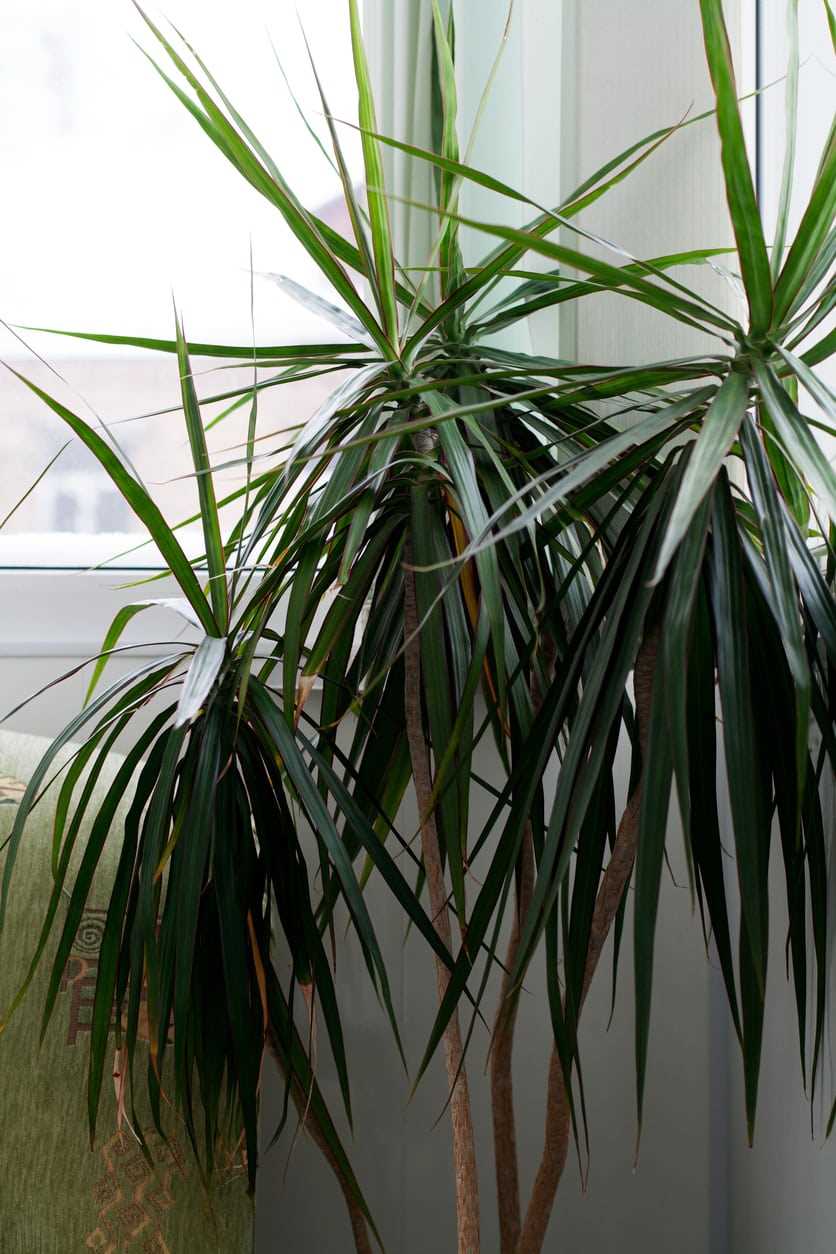

One of the most important factors to consider when choosing a dracaena variety is the light conditions in your home. Some dracaenas prefer bright indirect light, while others tolerate low light conditions. Make sure to evaluate the amount and intensity of light in the area where you plan to place your dracaena. This will help you select a variety that will thrive in the available light conditions.
Size
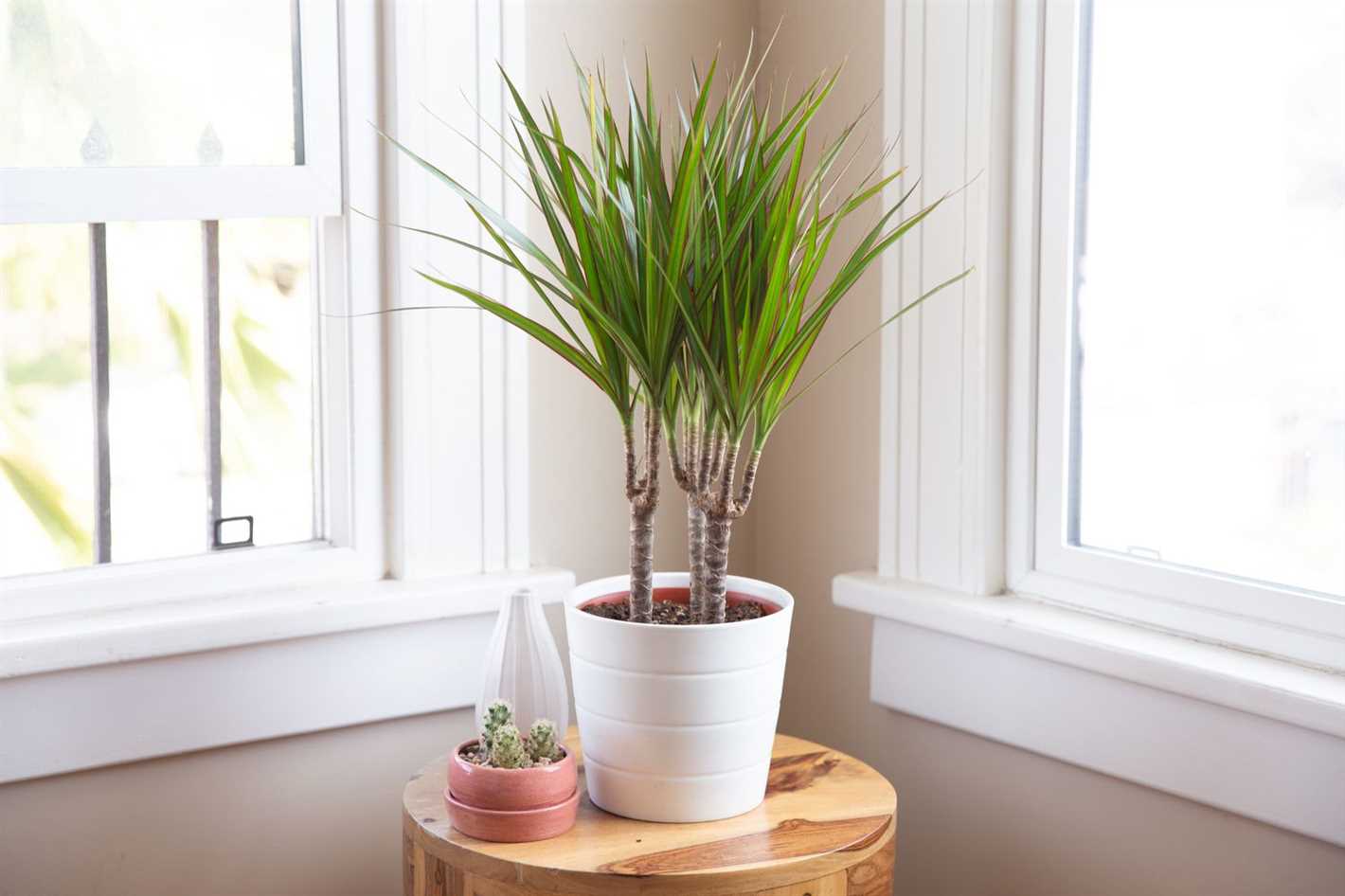

Dracaenas come in various sizes, ranging from small tabletop varieties to tall floor plants. Consider the space you have available for your dracaena and choose a variety that fits the area. If you have limited space, opt for a compact variety like Dracaena compacta or Dracaena marginata. For larger spaces, you can choose taller varieties such as Dracaena fragrans ‘Massangeana’ or Dracaena reflexa.
Foliage Appearance
Dracaenas have different leaf shapes, colors, and patterns. Some varieties have broad, lance-shaped leaves, while others have slender, arching foliage. Consider your personal preference for leaf shape and color when selecting a dracaena variety. If you prefer variegated foliage, look for varieties like Dracaena ‘Lemon Lime’ or Dracaena ‘Warneckii’. If you prefer solid green leaves, a variety like Dracaena deremensis ‘Janet Craig’ might be a good choice.
Watering and Care Requirements
It’s important to consider the watering and care requirements of different dracaena varieties before making a choice. Some varieties prefer to dry out slightly between waterings, while others can tolerate more moisture. If you tend to forget to water your plants, choose a variety that is more forgiving and can withstand periods of drought. On the other hand, if you enjoy nurturing your plants and have a regular watering schedule, you can choose a variety with slightly higher water needs.
Conclusion
Choosing the perfect dracaena for your home involves considering several factors such as light requirements, size, foliage appearance, and care needs. By assessing these factors and matching them with your preferences and available resources, you can find the ideal dracaena variety that will thrive in your home and bring beauty to your indoor space.
Essential Light Requirements for Dracaena Plants
Dracaena plants require a certain amount of light in order to thrive and grow properly. Understanding the light requirements of your dracaena plant is crucial for its overall health and well-being.
1. Indirect, Bright Light
Dracaena plants prefer indirect, bright light. They thrive in well-lit areas, but direct sunlight can scorch their leaves. Place your dracaena near a window that receives bright, indirect sunlight for a few hours a day.
2. Avoid Direct Sunlight
Avoid placing your dracaena plant in direct sunlight. While some species can tolerate a small amount of direct sunlight, most dracaena species prefer indirect light. Direct sunlight can cause burns, yellowing, or browning of the leaves.
3. Low Light Tolerant Varieties
Some dracaena varieties, such as Dracaena marginata or Dracaena fragrans, can tolerate lower light conditions. These varieties are ideal for offices or homes with minimal natural light. However, they still need some light to survive, so place them near a window or provide artificial lighting.
4. Rotate the Plant
To ensure even growth and prevent the plant from leaning towards the light, rotate your dracaena plant every few weeks. This will encourage balanced growth and prevent one side of the plant from receiving more light than the other.
5. Artificial Lighting
If you don’t have access to natural light, you can use artificial lighting to meet the light requirements of your dracaena plant. Choose a full-spectrum grow light and place it a few feet above the plant. Leave the light on for around 12-14 hours a day to mimic natural daylight.
6. Signs of Insufficient Light
If your dracaena plant is not receiving enough light, it will show signs of stress. These may include pale or yellow leaves, leggy growth, and slow or stunted growth. Monitor your plant closely and adjust the light conditions accordingly.
| Light Requirement | Light Level |
|---|---|
| Low Light | 100 – 250 foot-candles |
| Moderate Light | 250 – 500 foot-candles |
| Bright Light | 500 – 1000+ foot-candles |
By understanding the essential light requirements for dracaena plants, you can ensure that your plant receives the right amount of light to thrive and grow. Proper lighting will help keep your dracaena healthy, vibrant, and beautiful.
Watering and Humidity Tips for Dracaena Plants
Proper watering and humidity levels are essential for the health and well-being of your Dracaena plant. Follow these tips to ensure that you are providing the right amount of water and humidity for your plant:
1. Watering
- Water sparingly: Dracaena plants do not require frequent watering. Allow the top inch of soil to dry out before watering again.
- Avoid overwatering: Overwatering can lead to root rot and other issues. Make sure the pot has proper drainage and remove any excess water from the saucer.
- Check the soil: Before watering, check the moisture level of the soil by sticking your finger about an inch deep into the soil. If it feels dry, it’s time to water.
- Use room temperature water: Avoid using cold water straight from the tap, as it can shock the roots. Let the water sit overnight to reach room temperature before watering.
- Water thoroughly: When you do water, make sure to thoroughly saturate the soil until water drains from the bottom of the pot.
2. Humidity
- Provide moderate humidity: Dracaena plants prefer moderate humidity levels. If the air in your home is too dry, consider using a humidifier or placing the plant on a tray filled with water and pebbles.
- Avoid misting: While misting can temporarily increase humidity, it can also create conditions for fungal growth. It is best to provide humidity through other methods.
- Group plants together: Placing your Dracaena plant near other plants can create a microclimate with increased humidity.
Remember that every Dracaena plant is unique, and factors such as temperature and sunlight can affect its watering and humidity requirements. It’s best to observe your plant closely and adjust your care routine accordingly.
Proper Soil and Fertilizer for Dracaena Plants
Dracaena plants thrive in well-drained soil that is rich in organic matter. It’s important to choose a soil mix specifically formulated for houseplants, as this will provide the right balance of nutrients and moisture retention. A good soil mix for dracaena plants should be loose, light, and have good drainage.
When it comes to fertilizing dracaena plants, it’s best to use a balanced, water-soluble fertilizer. Look for a fertilizer with an N-P-K ratio of 20-20-20 or something similar. This means the fertilizer contains equal amounts of nitrogen (N), phosphorus (P), and potassium (K), which are the three main nutrients that plants need.
During the growing season, which is typically spring and summer, you should fertilize your dracaena plant once a month. Dissolve the fertilizer in water according to the package instructions and water your plant with the solution. Be careful not to over-fertilize, as this can cause fertilizer burn and damage the plant.
In the dormant season, which is usually fall and winter, you can reduce the frequency of fertilization to once every two to three months. Dracaena plants naturally slow down their growth during this time, so they require less nutrients.
It’s important to always follow the instructions on the fertilizer package, as different products may have different recommended application rates. Additionally, make sure to water your dracaena plant thoroughly after fertilizing to prevent the roots from becoming burned.
In summary, using a well-draining soil mix and regularly fertilizing your dracaena plant with a balanced, water-soluble fertilizer will help ensure its health and vigor.
Common Pests and Diseases Affecting Dracaena Plants
Dracaena plants are generally hardy and resistant to pests and diseases. However, there are a few common issues that can affect the health of your dracaena plant. It’s important to be aware of these problems and take action to prevent and treat them as necessary.
Pests
1. Spider Mites: Spider mites are tiny pests that feed on the leaves of dracaena plants. They can cause visible damage, including yellow or brown spots, webbing, and leaf drop. To prevent spider mites, regularly mist your dracaena plant and keep the humidity levels up. If an infestation occurs, wipe down the leaves with a mixture of water and mild dish soap.
2. Mealybugs: Mealybugs are small, white, cotton-like insects that feed on the sap of dracaena plants. They can cause wilting, stunted growth, and yellowing of the leaves. To get rid of mealybugs, wipe down the leaves with a cotton swab dipped in rubbing alcohol. You may also need to use an insecticidal soap for severe infestations.
3. Scale Insects: Scale insects appear as small, raised bumps on the leaves and stems of dracaena plants. They suck the sap from the plant, causing yellowing, wilting, and leaf drop. To control scale insects, gently scrape them off with a soft brush or cloth. You can also use an insecticidal soap or horticultural oil.
Diseases
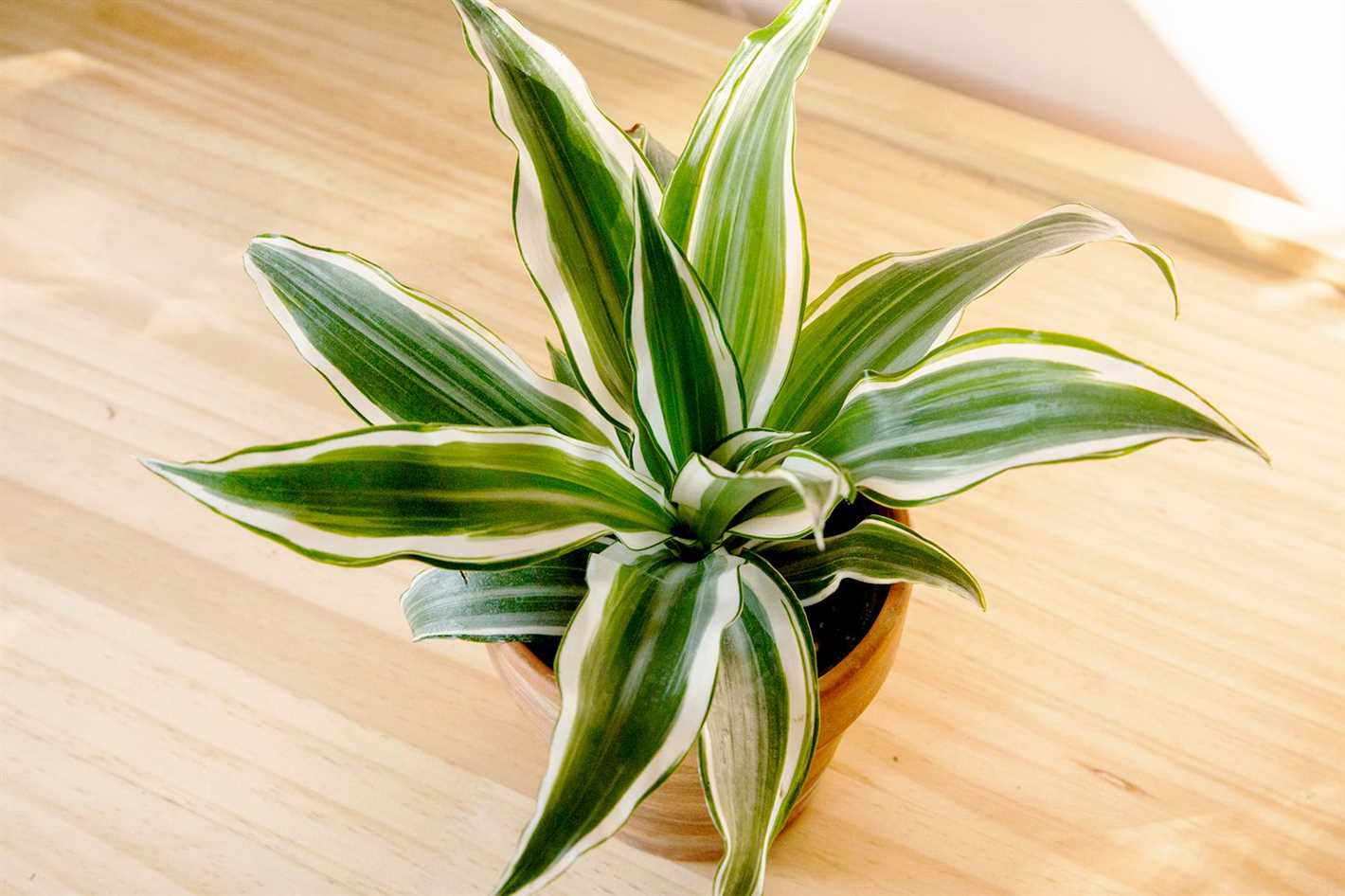

1. Root Rot: Root rot is a common disease that affects dracaena plants when they are overwatered or planted in poorly draining soil. It causes the roots to become mushy and discolored, leading to wilting, yellowing leaves, and stunted growth. To prevent root rot, make sure your dracaena is planted in well-draining soil and allow the top inch or two of soil to dry out between waterings.
2. Leaf Spot: Leaf spot is a fungal disease that causes brown or black spots on the leaves of dracaena plants. It can be caused by overwatering or high humidity. To prevent leaf spot, avoid getting the leaves wet while watering and provide good air circulation around the plant. If leaf spot occurs, remove and destroy the affected leaves and adjust your watering practices.
3. Leaf Tip Burn: Leaf tip burn is a common condition where the tips of the dracaena leaves turn brown or black. It can be caused by overfertilization, underwatering, or low humidity. To prevent leaf tip burn, avoid overfertilizing your dracaena and make sure to water it regularly. You can also increase humidity by placing a tray of water near the plant or using a humidifier.
In conclusion, by being aware of the common pests and diseases that can affect dracaena plants, you can take the necessary steps to prevent and treat these issues. Regular monitoring, proper watering, and maintaining a healthy growing environment will help keep your dracaena plant thriving.
Pruning and Propagation Techniques for Dracaena Plants
Pruning and propagation is an important aspect of caring for your Dracaena plant. Pruning helps to maintain the shape and size of the plant, while propagation allows you to create new plants from existing ones. Here are some techniques to help you prune and propagate your Dracaena plant.
Pruning
1. Trim dead or yellowing leaves: Use clean, sharp pruning shears to remove any dead or yellowing leaves. This will help improve the overall appearance of the plant and prevent the spread of diseases.
2. Shape the plant: If your Dracaena plant has become too tall or leggy, you can prune the stem to encourage branching and create a fuller, more compact shape. Cut the stem just above a node (where leaves grow) to promote new growth.
3. Remove overcrowded stems: If your Dracaena plant has multiple stems that are growing too close together, you can selectively remove some of them to create more space and allow for better air circulation.
4. Control the plant’s size: Dracaena plants can grow quite large, but if you prefer a smaller plant, you can prune back the stems to your desired height. Remember to cut above a node to stimulate new growth.
Propagation
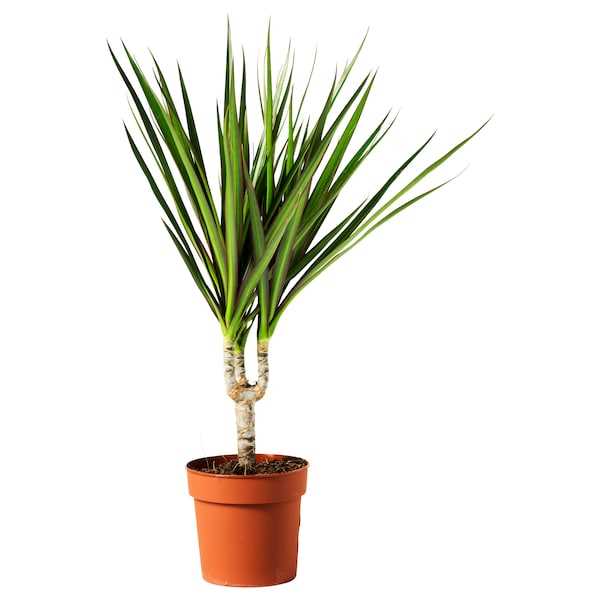

1. Stem cuttings: One of the easiest ways to propagate your Dracaena plant is through stem cuttings. Select a healthy stem and cut it into sections, making sure each section has at least one node. Place the cutting in a container with moist soil or water, and within a few weeks, roots should start to develop.
2. Leaf cuttings: Another method of propagation is through leaf cuttings. Take a healthy leaf and cut it into smaller sections, ensuring that each section has a small portion of the main vein. Plant the leaf sections in moist soil or water, and roots should start to form in a few weeks.
3. Air layering: Air layering is a more advanced technique of propagation. With this method, you make a small incision in the stem and wrap it with moist sphagnum moss or rooting hormone. This encourages the stem to develop roots while still attached to the mother plant. Once roots have formed, you can cut the stem and repot it as a new plant.
Remember to provide proper care and maintenance to your newly propagated Dracaena plants, including adequate water, light, and temperature conditions. With proper pruning and propagation techniques, you can easily maintain and expand your collection of Dracaena plants.
Tips for Maintaining Healthy Dracaena Plants
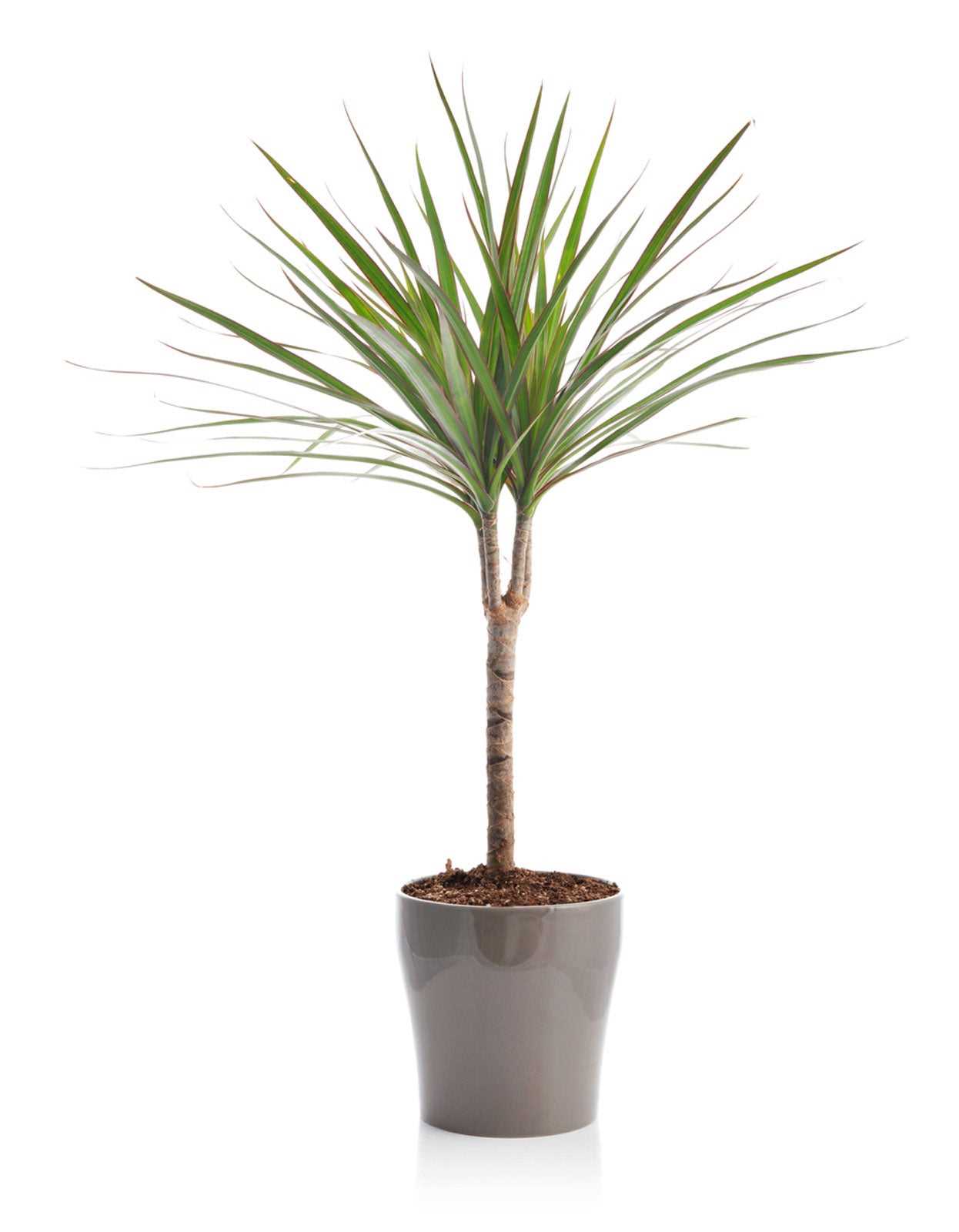

Dracaena plants are popular houseplants known for their striking foliage and easy care requirements. To keep your dracaena plants healthy and vibrant, follow these tips:
- Provide Adequate Light: Dracaena plants thrive in bright, indirect light. Place your plant near a window with filtered sunlight or provide artificial light if necessary. Avoid placing your dracaena in direct sunlight, as it can scorch the leaves.
- Water Regularly: Dracaena plants prefer slightly moist but well-draining soil. Water your plant when the top inch of soil feels dry to the touch. Avoid overwatering, as this can lead to root rot. During winter months, reduce watering frequency as the plant’s growth slows.
- Humidity: Dracaena plants benefit from moderate humidity levels. Increase humidity by placing a tray filled with water near the plant or using a humidifier. Mist the leaves occasionally to enhance humidity.
- Temperature: Dracaena plants thrive in temperatures between 65-75°F (18-24°C). Avoid exposing the plant to temperature extremes and drafts.
- Fertilize Regularly: Feed your dracaena plant with a balanced liquid fertilizer every 2-4 weeks during the growing season (spring and summer). Follow the instructions on the fertilizer packaging for proper dosage.
- Pruning: Trim yellow or dead leaves regularly to maintain the plant’s appearance. You can also prune the plant to control its size and shape. Use sharp, clean pruning shears for this task.
- Pest Control: Keep an eye out for common houseplant pests such as spider mites and mealybugs. If you notice pests, isolate the affected plant and treat it with appropriate insecticidal soap or oil.
- Rotate the Plant: To ensure even growth, rotate your dracaena plant every few months. This will prevent the plant from leaning towards the light source and promote balanced foliage development.
- Monitor for Signs of Stress: Watch out for signs of stress such as browning or curling leaves, leaf drop, and stunted growth. Adjust your care routine accordingly to address any issues.
By following these tips, you can maintain healthy and beautiful dracaena plants that will enhance the ambiance of your home or office.
Decorating Your Home with Dracaena Plants
Dracaena plants are not only beautiful and easy to care for, but they can also be used to enhance the decor of your home. Here are some tips on how to decorate your home with dracaena plants:
1. Choose the Right Variety
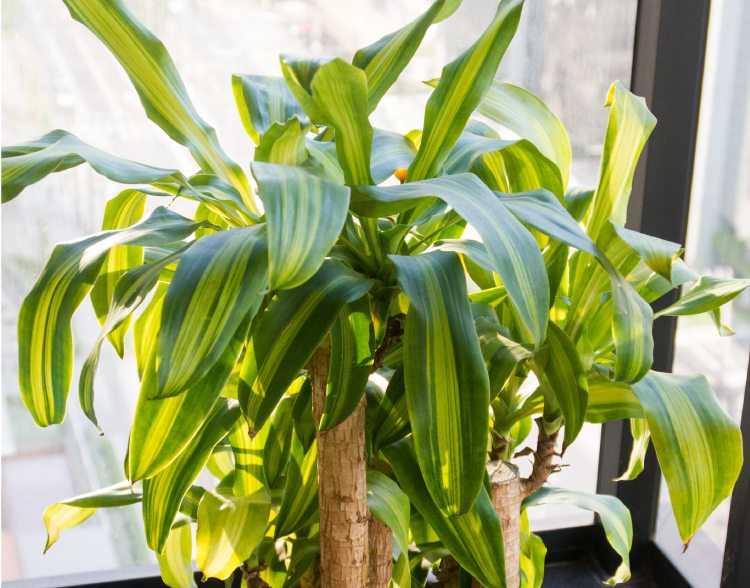

There are many different varieties of dracaena plants available, so choose the one that best suits your home’s style and atmosphere. Some popular varieties include Dracaena marginata, Dracaena fragrans, and Dracaena reflexa.
2. Place Them in Key Areas
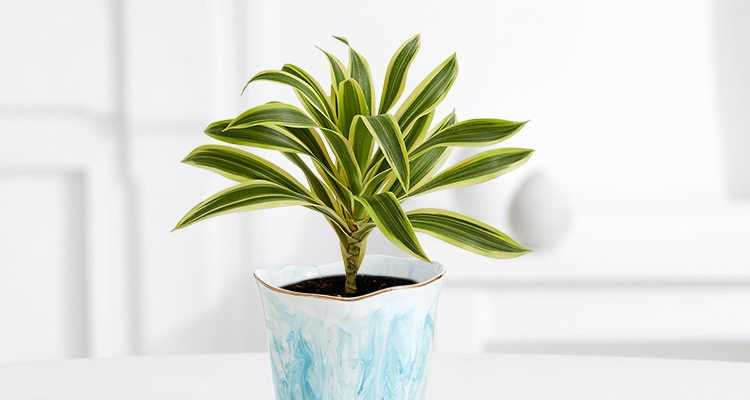

Dracaena plants can be placed in various areas of your home to create a focal point or add a touch of greenery. Consider placing them in the living room, dining room, or near a window to create an inviting and fresh atmosphere.
3. Use Them as Tabletop Decorations
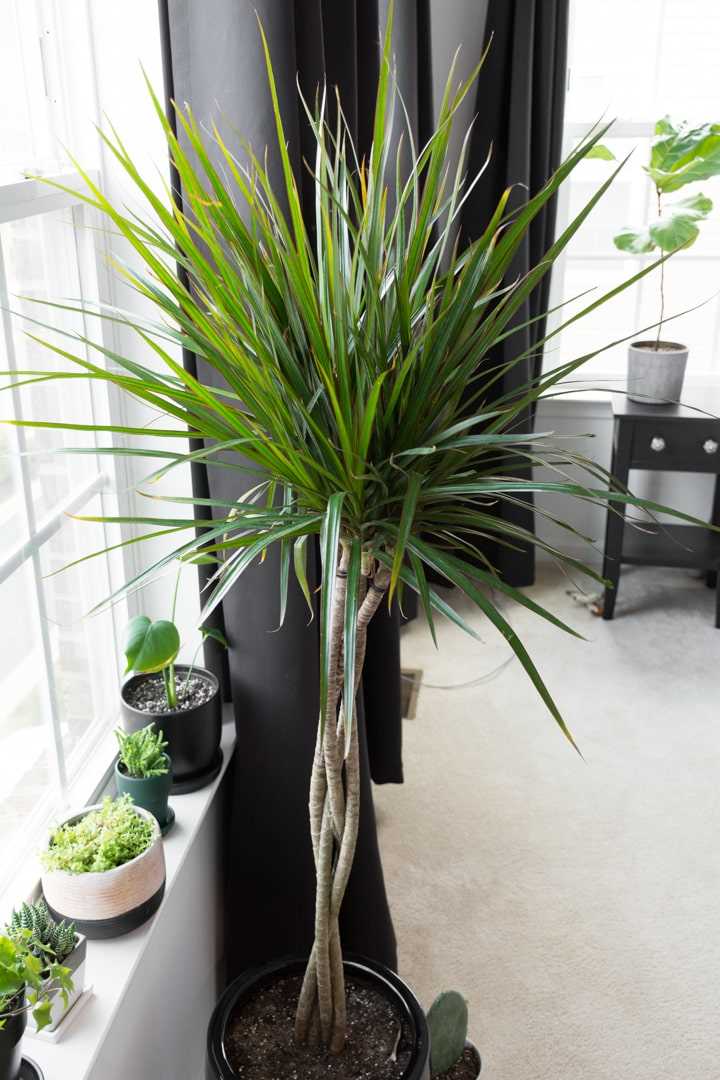

Dracaena plants can add height and interest to any tabletop or shelf. Place them in decorative pots or planters and arrange them alongside other decorative items such as candles or books.
4. Create a Statement Wall
If you want to make a bold statement with your dracaena plants, consider creating a statement wall. Install a large shelf or mount planters directly on the wall and fill them with dracaena plants. This will instantly transform the look of any room.
5. Mix and Match with Other Plants
Dracaena plants can be mixed and matched with other houseplants to create an interesting and diverse indoor garden. Combine them with plants of different shapes, sizes, and colors to create a visually appealing display.
6. Use Them in Hanging Baskets
Dracaena plants can also be used in hanging baskets to create a cascading effect. Hang them in areas such as the balcony, patio, or near windows to add greenery and create a cozy and relaxing atmosphere.
7. Create a Tropical Oasis
If you want to create a tropical oasis in your home, dracaena plants are a perfect choice. Combine them with other tropical plants such as palm trees or ferns, and add tropical-inspired decor such as colorful cushions or decorative accents.
8. Display Them in Terrariums
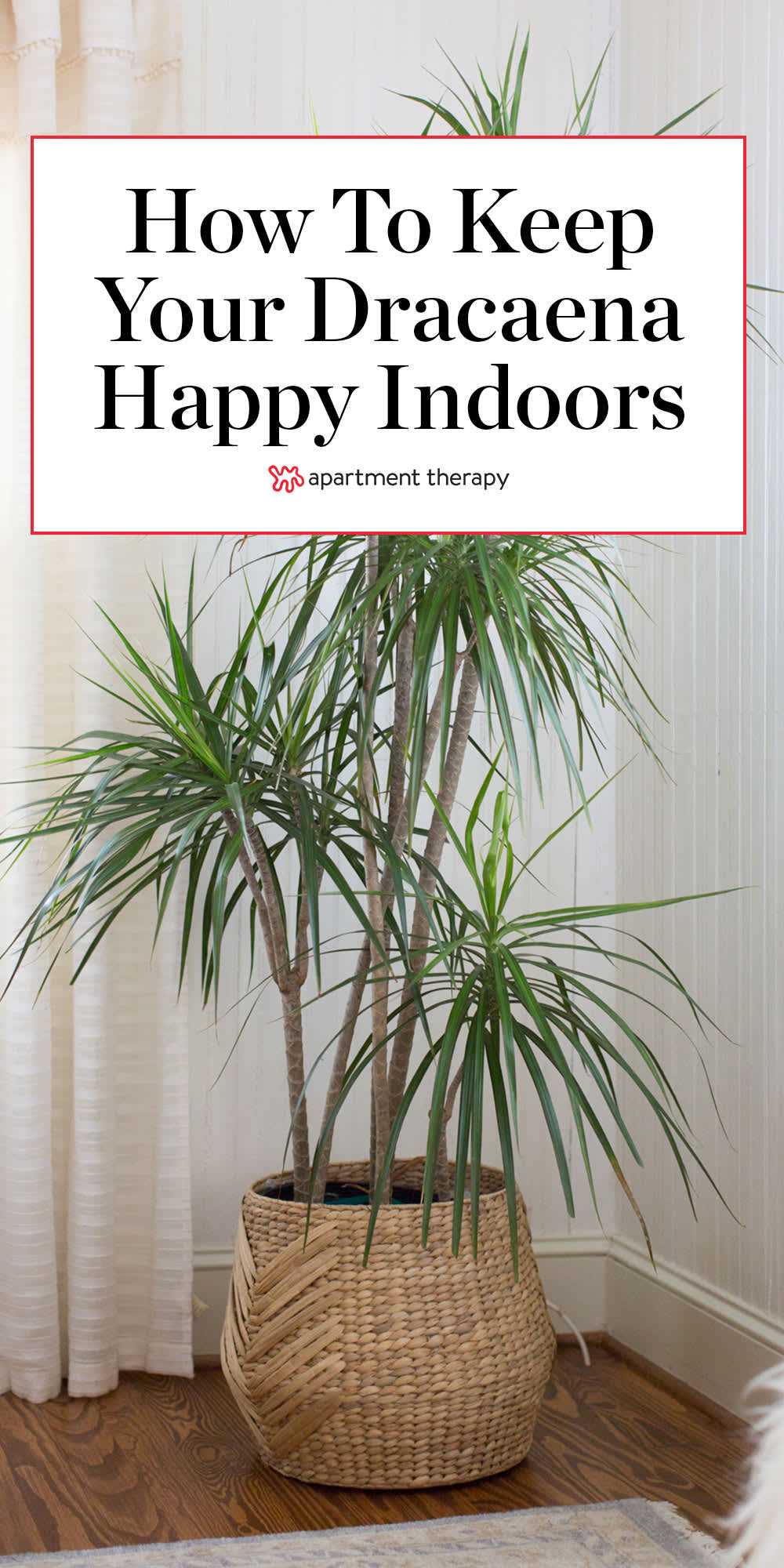

For a unique and visually captivating display, place your dracaena plants in glass terrariums. This will not only protect them but also create a miniature ecosystem that can be admired from any angle.
Remember, dracaena plants thrive in bright, indirect light and prefer well-draining soil. With proper care and attention, they will not only enhance the decor of your home but also provide you with a sense of tranquility and relaxation.
Q&A:
How often should I water my Dracaena plant?
Dracaena plants are tolerant of dry conditions, so it’s important not to overwater them. Generally, you should water your Dracaena plant once a week or when the top inch of soil is dry.
What kind of light does a Dracaena plant need?
Dracaena plants thrive in bright, indirect light. They can tolerate low light conditions, but too much direct sun can burn their leaves. Place your Dracaena plant in a location with filtered or indirect sunlight for optimal growth.
How often should I fertilize my Dracaena plant?
Dracaena plants require less frequent fertilizing compared to other houseplants. You can fertilize your Dracaena plant once every two to three months during the growing season using a balanced, water-soluble fertilizer. Be sure to follow the instructions on the fertilizer’s packaging for proper dosage.
What should I do if the tips of my Dracaena plant’s leaves turn brown?
Brown tips on Dracaena plant leaves can be a sign of underwatering or low humidity. To remedy this, increase the frequency of watering and consider misting the leaves with water to increase humidity. Trimming the brown tips with clean, sharp scissors can also help improve the plant’s appearance.
Can I propagate my Dracaena plant?
Yes, you can propagate your Dracaena plant through stem cuttings. Take a cutting from the top few inches of the stem and place it in water or moist soil. Keep the cutting warm and moist until roots develop, then transfer it to a pot with well-draining soil.
Why are the leaves on my Dracaena plant turning yellow?
Yellowing leaves on a Dracaena plant can be a sign of overwatering or improper drainage. Make sure the pot has drainage holes, and allow the soil to dry out slightly between waterings. Additionally, check for any insect infestations that could be causing leaf damage.
Can I keep my Dracaena plant outside?
Dracaena plants are typically grown as houseplants, but they can be placed outside during the warmer months. However, they should be protected from direct sunlight and strong winds. Gradually acclimate your Dracaena plant to outdoor conditions to prevent shock.
Video:
Dracaena Plant Care 101 | Dragon Tree and Corn Plant







